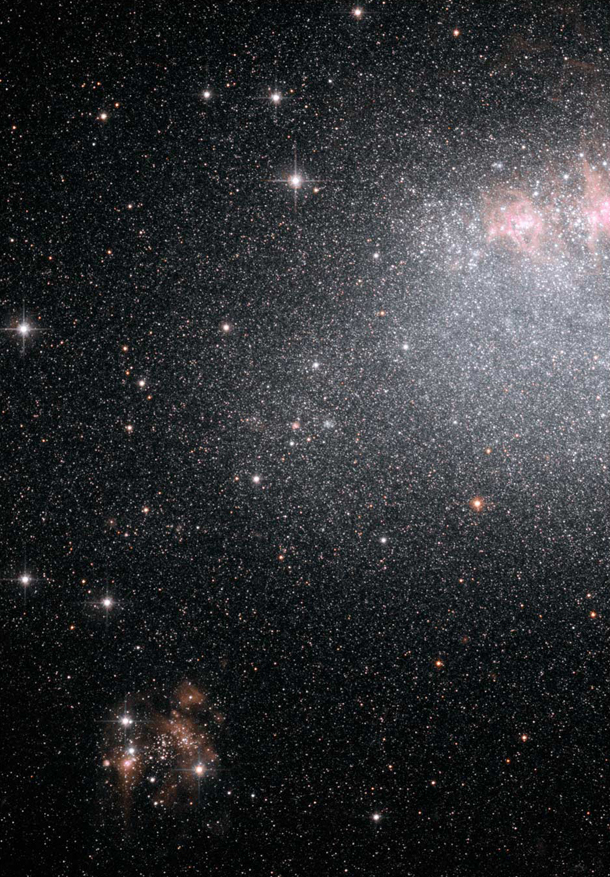Stars are born when gas clouds in galaxies collapse. Eddies form, clumps and knots of higher density gas a hundred billion kilometers across, which then contract under their own gravity and form stars. Sometimes, galaxies undergo violent bursts of star formation, making huge numbers of stars all at once.
What does it look like when that happens?
This:
 |
| Credit: NASA, ESA, K. McQuinn (University of Minnesota, Minneapolis), and I. Karachentsev (Special Astrophysical Observatory of the Russian Academy of Sciences, Russia) |
Coooooool.
This is Hubble’s view of the nearby dwarf galaxy IC 4662. At 8 million light years distant, it’s one of the closest galaxies in the sky, and that makes it a perfect target for all kinds of investigations. In this case, astronomers targeted IC 4662 and several other nearby dwarf galaxies — smaller-than-usual galaxies, much smaller than our Milky Way — to try to understand how stars form in them.
IC 4662 is undergoing a current burst in star formation even as we watch. See those two big red regions? Those are gigantic clouds of gas furiously forming new stars. Take a close look at them: you can see how they appear to be less red in the middle, and there are lots of stars there. That’s because massive stars born inside the clouds blast out ultraviolet light and strong winds of subatomic particles (like a super solar wind), eating away at the gas and carving out a giant bubble in the cloud. That kind of structure is a sure sign that stars are being born at a high rate*.
But we already knew this! What’s new here is that it appears that in these dwarf galaxies, star formation happens in waves, starting in one place and sweeping across the entire galaxy over time. That’s very interesting, and surprising. It was thought that these starbursts, in general, just happened in one location and lasted for a few million years. Now it looks like they start that way, but then spread out from there like an infection, with the whole process lasting for two hundred million years or more!
That tells us something about the way stars form in these galaxies, which also tells us about their structure, how the gas clouds are laid out, and how these galaxies behave. We care about this for two reasons: one is that we are pretty sure that big galaxies, like our own, form by the collision and merger of smaller dwarf galaxies like this one. The more we understand about dwarf galaxies, the better a picture we get of the history and composition of our own.
But we also care because this is just so very cool. We can watch as stars are born in other galaxies! We can understand how this happens, why it happens, and what the implications are… and we do it using an observatory orbiting our planet, pointed toward a cosmic collection of stars and gas that lies 80 quintillion kilometers away!
Always try to remember that when you read something about science. We do this stuff because it’s important, but we also do it because it’s so tremendously wonderful.
*If you download the ginormous version of this image (it’s 5Mb) you can see faint, arc-shaped extensions to the two reddish gas clouds (above the one at the top of the picture, and below the one at the bottom). I suspect that’s where the furious winds from the stars have literally popped the bubbles; what astronomers call a blowout for obvious reasons. You can see that the hollow parts of the clouds "point" toward those blowouts, just as you’d expect if the stars inside had pushed on the cloud itself and caused it to pop in that direction.



0 comments:
Post a Comment